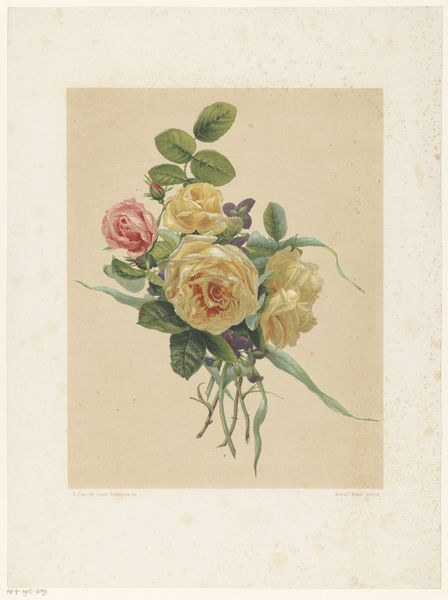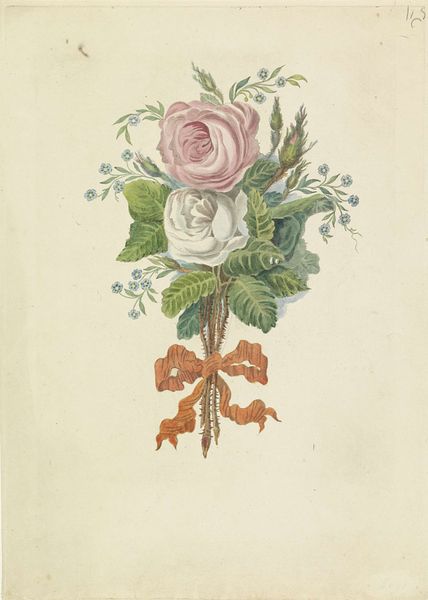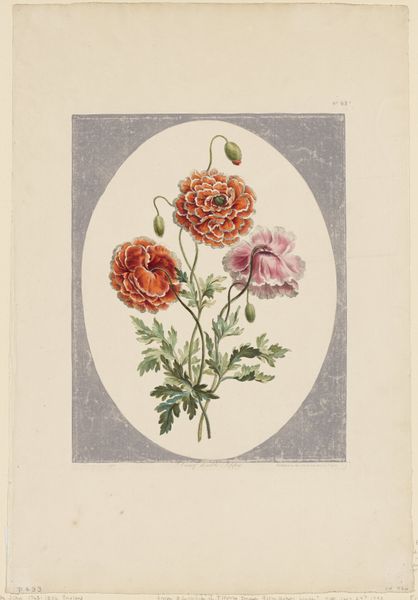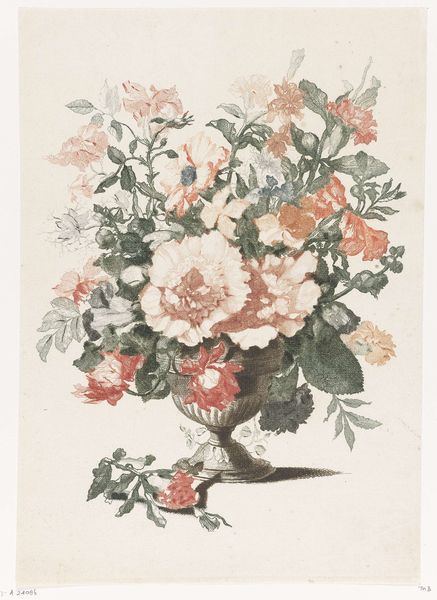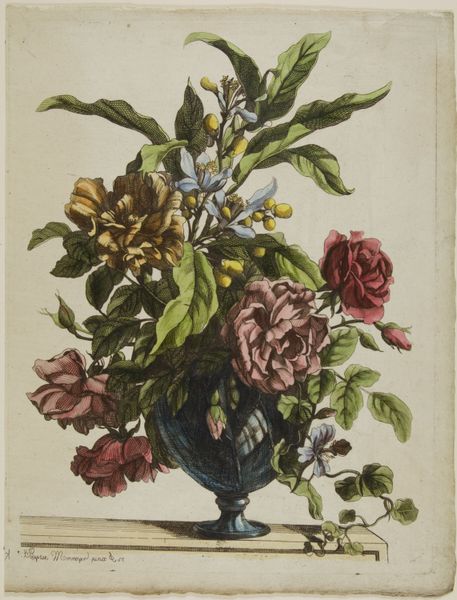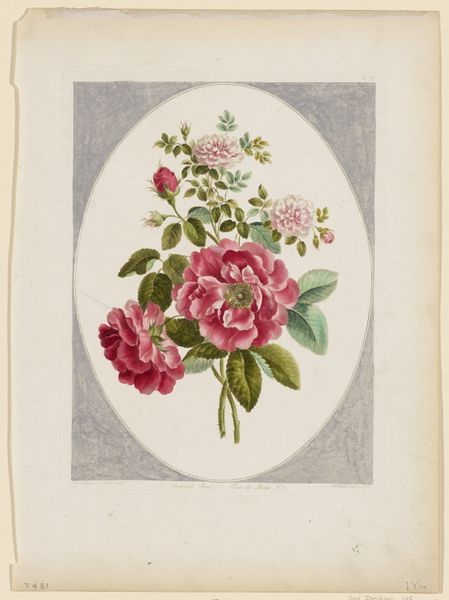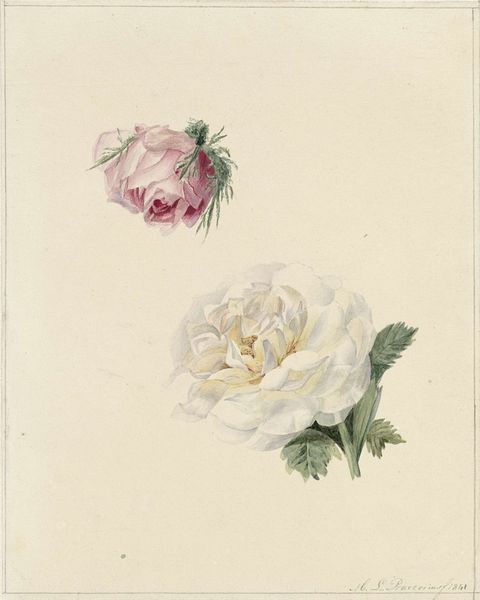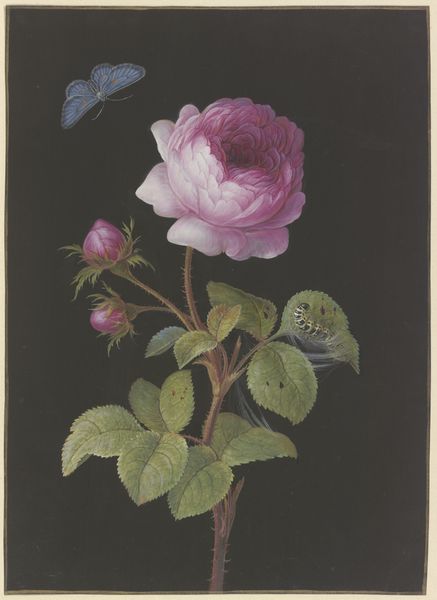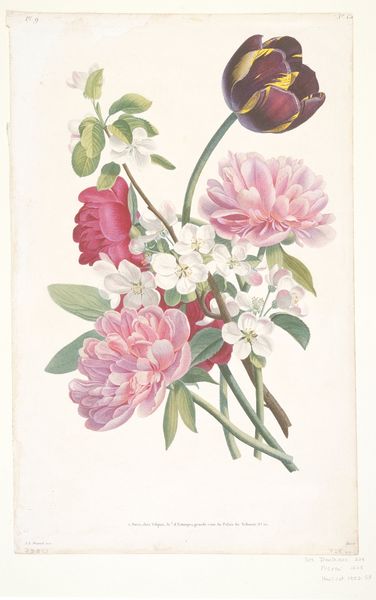
Common Camellias (Camellia japonica) c. 19th century
0:00
0:00
drawing, painting, watercolor
#
drawing
#
painting
#
watercolor
Dimensions: 25 7/16 x 17 3/4 in. (64.64 x 45.09 cm) (sheet)
Copyright: Public Domain
Curator: These camellias are stunning. What's your first impression? Editor: They're undeniably beautiful. So delicate, the way the watercolor captures the light on the petals. But I can't help thinking about what went into cultivating them—the land, the labor involved. It’s quite seductive, but for whom, and at what cost? Curator: Precisely. Let’s delve into the sociohistorical context. This work, "Common Camellias," attributed to Clara Maria Pope, was created in the 19th century. These flowers weren’t just botanical subjects; they were powerful signifiers. Editor: Signifiers of wealth, of course. Exotic blooms showcased in the gardens of the elite, demonstrating their access to global resources. One has to remember these aren't just lovely renderings of nature; it’s the story of an expanding British Empire made manifest. Curator: Yes, and the work of women like Pope played a key role in that. Botanical illustration, deemed an acceptable pursuit for women, also subtly promoted colonial interests and obscured some of the more brutal facts of empire building. They gained social acceptance because they supported dominant cultural narratives. Editor: The act of painting, the choice of watercolor as a medium, it all reflects a certain ideology. How readily available were these colors? Were these papers imported, who makes the paint, all these labor contexts are never displayed in the image. Curator: Looking at the delicate rendering of the petals, there's also an almost clinical obsession with cataloging, aligning it with the Linnaean taxonomy that facilitated the categorization and control of the natural world under a Western, male gaze. Even gender became part of those scientific efforts! Editor: And beyond that, we should ask if that artistic vision becomes propaganda, aestheticizing inequality through an accessible visual product made via human hand. It makes me see all the craft involved not just in the materials on view, but the social production that the image can be said to depend upon. Curator: It's fascinating to consider the many layers of meaning embedded in this seemingly simple floral study. Editor: Absolutely, it underscores how art becomes a commodity tied to class and power relations that we should always keep at the center of the narrative.
Comments
No comments
Be the first to comment and join the conversation on the ultimate creative platform.

